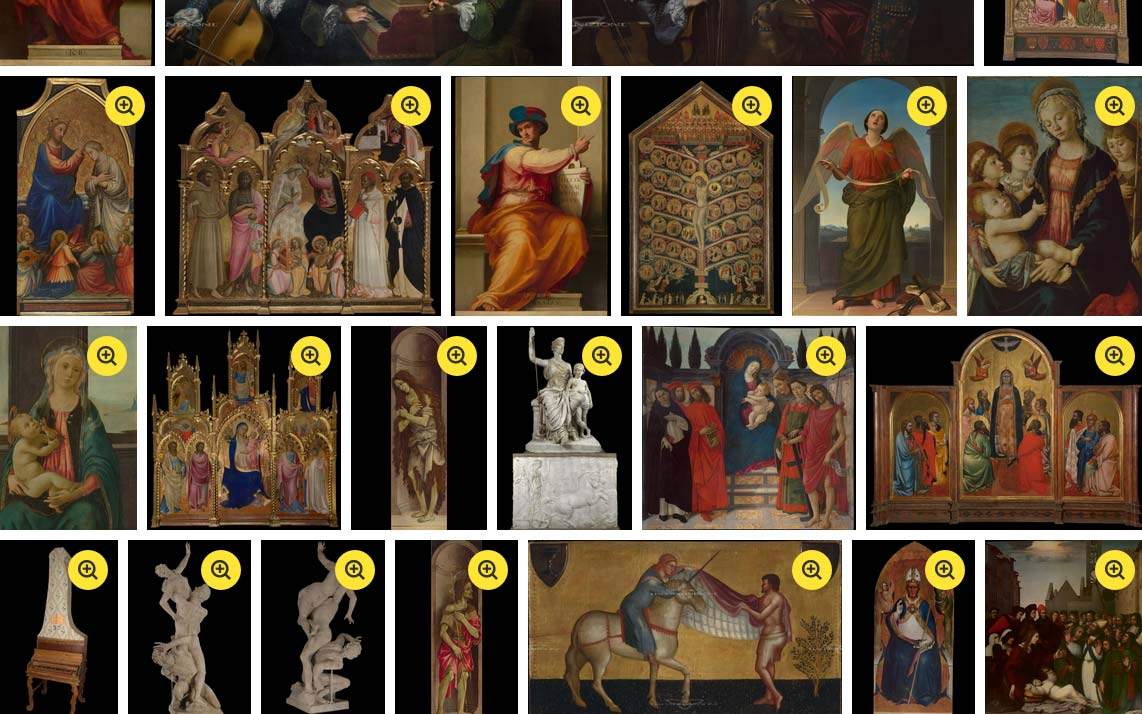At the Galleria dell’Accademia in Florence, the campaign to capture ultra-high-resolution photographs of the main works preserved in the Florentine museum has been completed: the project, entrusted to Haltadefinizione, a company specializing in digitization that recently signed an agreement with the Ministry of Cultural Heritage to enhance and promote the state collections, made use of technologies developed in collaboration with partner Memooria, studying each photographic setup so as to overcome the various material and logistical criticalities with optimal results, managing to capture every type of surface at every height regardless of environment, light and material. Careful development processes also enabled the processing of images with very high fidelity and resolution.
Thanks to this campaign, now the masterpieces of the Accademia Gallery are visible on the web in very high definition, with enlargements that manage to reveal even details invisible to the naked eye. The project began in an experimental phase in August 2019 with Andrea Orcagna’s Pentecost triptych, which was under restoration at the time, and which has made it possible, today, to digitize more than 75 among paintings, such as altarpieces by Pietro Perugino, Bronzino, and Allori, gold backgrounds, musical instruments, plaster statues, and, last but not least, the clay model of Giambologna’s Rape of the Sabine Woman.
The project made use of Gigapixel technology, a non-invasive technique, and every aspect of the shooting was studied so that the artwork would not be at risk. Gigapixel is an innovative photographic technique that makes it possible to obtain images with definition, quality and detail that cannot be achieved with other acquisition methods. It is based on the construction of a mosaic composed of the union of several macrophotographs of the details of a single subject. It consists of hundreds, sometimes thousands, of photographic shots with a high level of magnification, “stitched” together through a process called stitching. The end result is an image of a work composed of billions of pixels, allowing each individual detail to be magnified dozens of times while maintaining extremely high definition.
The work, in all its various stages, was always carried out under the supervision of the museum staff and with the continuous confrontation with the technicians in charge especially on the often complex logistics, think for example of the sculptural groups in the Gipsoteca or the important masterpieces preserved within climaframes, and always having as a primary need the respect and preservation of the works of art. Prominent among the digitized works was the earthenware model of Giambologna’s Rape of the Sabine Woman, a sculpture remarkable not only for its artistic value but also for its grandeur: the work measures more than four meters, is placed on a pedestal, and altogether at its highest point exceeds six meters. In all, more than 59700 images were taken, totaling more than 18000 GB of data. Among the worked surfaces digitized during the campaign, whether these were painted or sculpted, it is possible to calculate approximately 310 square meters.
This complex digital imaging operation has a twofold purpose: on the one hand, to monitor the state of conservation of the works and, on the other, to allow the community to access the masterpieces in a never-before-seen way, through the https://www.haltadefinizione.com/image-bank/?mixed=Accademia+Firenze link, with images in very high definition and innovative tools for distance education and virtual visit activities.
 |
| 75 masterpieces from the Accademia Gallery can be seen on the web in ultra-high definition |
Warning: the translation into English of the original Italian article was created using automatic tools. We undertake to review all articles, but we do not guarantee the total absence of inaccuracies in the translation due to the program. You can find the original by clicking on the ITA button. If you find any mistake,please contact us.